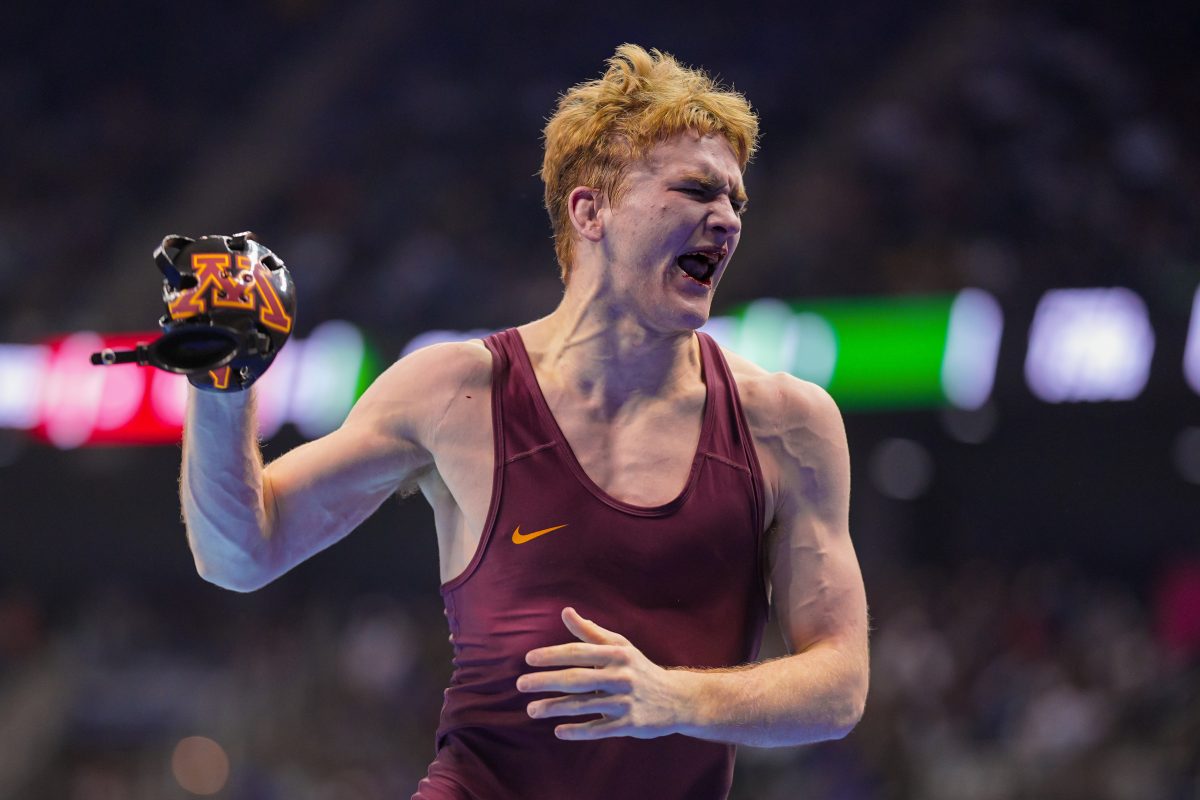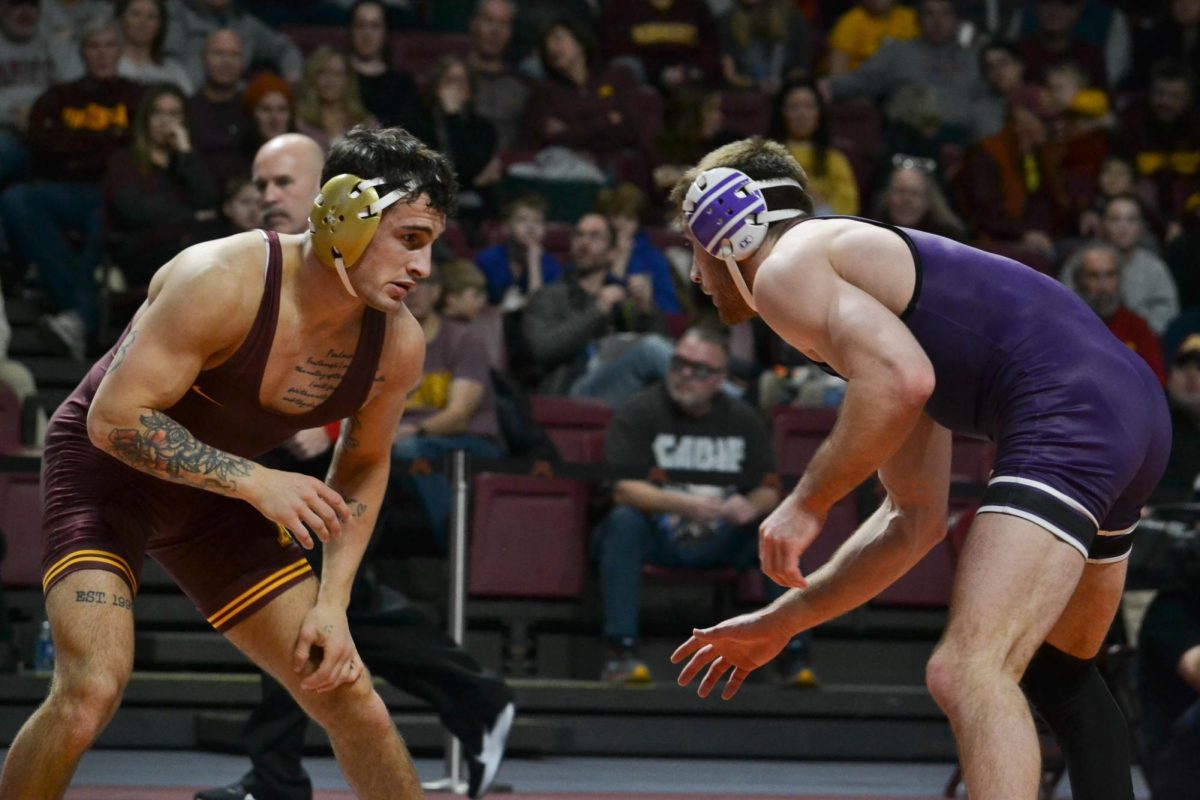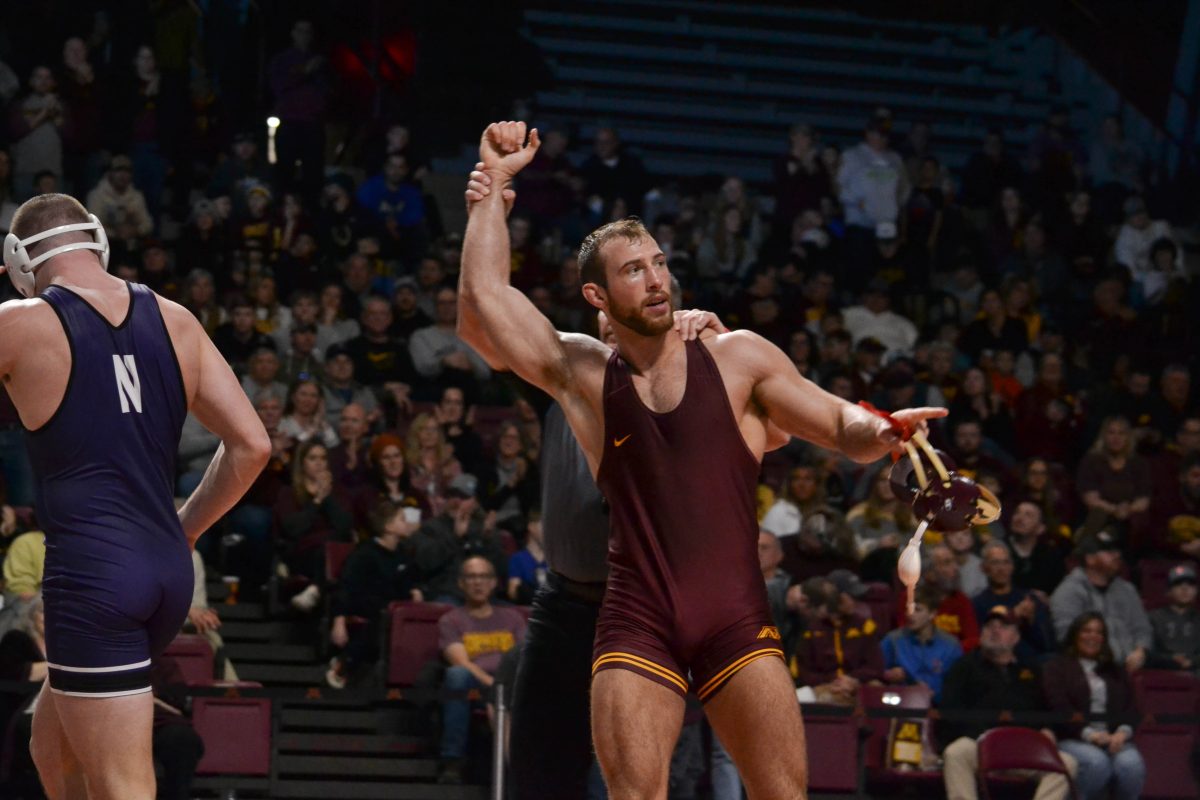Year after year the same hardcore fan base flocks to Gophers wrestling meets.
Former wrestlers. Wrestling coaches. Wrestling parents. Beginning wrestlers.
Attendance is considered good for the sport, but few people outside the tight-knit wrestling circle show up to these events, even though the team has won three national championships since 2001 and is perennially ranked near the top of the country.
Why?
Gophers head coach J Robinson feels most people don’t attend because they don’t understand the sport.
“A lot of people are just intimidated,” he said. “No one wants to go to something they don’t get. That’s scary and turns people off.
“I think we wrestling people make things too complicated with the jargon and everything. A lot of people don’t know what a technical fall is, but then again not a whole lot of people know what a split-T, wide receiver out is in football. I think if more people understood, more people would be interested.”
With that in mind, and with the Big Ten championships being held at Williams Arena this year, The Minnesota Daily has compiled some of the basics of wrestling for those who don’t know a half-nelson from Willie Nelson but would like to learn.
Dual meets
There are two types of competition in college wrestling: dual meets and tournaments. The Gophers typically compete in three or four tournaments per year.
Meanwhile they have 21 dual meets, which are competitions between just two teams. In a dual meet, wrestlers from each of the 10 NCAA-outlined weight classes face each other – these weight classes go from 125 pounds to “heavyweights,” which have a maximum weight of 285 pounds.
Dual meets often start at 125 pounds and end with heavyweights, but meets can start at any weight class as long as they go in order. For example, if a dual meet starts at 157 pounds, it has to cycle through the weights and end with the 149-pounders.
The team score is compiled from the results of each match and, unless there is a tie, only one team gets points. Large momentum swings are possible over the course of a meet because, for example, a team can make as many as 18 points in three matches.
Dual meet scores end up being similar to football scores – the average Gophers dual meet score is 27-13.
“Not only are individual matches exciting, but I think fans get a kick out of dual meets,” assistant coach Joe Russell said. “It’s hard to go home early because the other team’s almost always in reach, unlike a basketball or football game.”
The most a wrestler can score for their team is six points, which are won by pinning their opponent. The team would also get six points if the opponent is disqualified, forfeits, or is injured.
A pin, also called a fall, is recorded when a wrestler holds his opponent’s shoulder blades or shoulders on the mat for a full second. There are many “holds” that are used to get a pin, including the “half-nelson,” which is when a wrestler has his arm under his opponent’s and is holding his neck.
Pins aren’t very common in even competition. In Gophers dual meets against ranked opponents, there has been an average of less than one pin per meet for both teams combined. Minnesota’s 125-pound Jayson Ness leads the nation in pins with 18.
Next is a “technical fall,” which is worth either four or five points and happens when one wrestler leads another by 15 points or more at any time during the match.
The final way to score is with “bonus points” which are earned through a “major decision:” when a wrestler wins by more than eight points, but less than 15. The team is awarded four points for a major decision.
Any match decided by fewer than eight points is worth three team points.
The match
“Sometimes we get too caught up in the scoring and that’s where people get confused,” Russell said. “But once you get it, it’s a really fair system because you can’t blame anyone else if you lose.”
The scores of the individual matches are independent of team scores. For example, even if a match score is 15-14 (which is high for a match score) the winning team still gets three points and the losing team zero.
Most individual matches finish with single digit scores for both opponents because each match is only seven minutes long – three minutes for the first period, and two minutes for the second and third periods.
The most confusing jargon comes from individual matches, which Robinson admits even loyal wrestling fans can’t always understand.
“All people really need to know is that if a guy takes another guy down, he gets two points,” Robinson said. “But announcers and coaches and people on message boards are always naming all the moves, which makes it confusing when it’s not really necessary.”
The mat is set up as a large circle with a smaller circle inside it. Wrestlers have to keep one foot, or other extremity, in the circle to be considered in bounds. The wrestler who goes out of bounds must go on their knees in the center of the circle, in what is called a defensive position.
It is also mandated that wrestlers stay close to the middle circle, because if they try to avoid their opponent they will be called for stalling. This ensures almost nonstop action during the match, one of the main attractions for fans.
“I’ve heard people say that wrestling is boring, and I just don’t get that,” Robinson said. “It’s constant action like no other sport. No matter how much a guy is winning by, he knows he can get taken down at any time, and the rules are set up so you always have to be wrestling. There’s nothing boring about it.”
Robinson said he has hope for the sports emergence into the mainstream, particularly with more television coverage offered by stations like the Big Ten Network, which has aired three Gophers dual meets.
“I hear people all the time tell me they watched it for the first time and were enthralled,” he said. “So I think if people just come out to one meet or see one on TV they might be surprised how much they enjoy it.”














